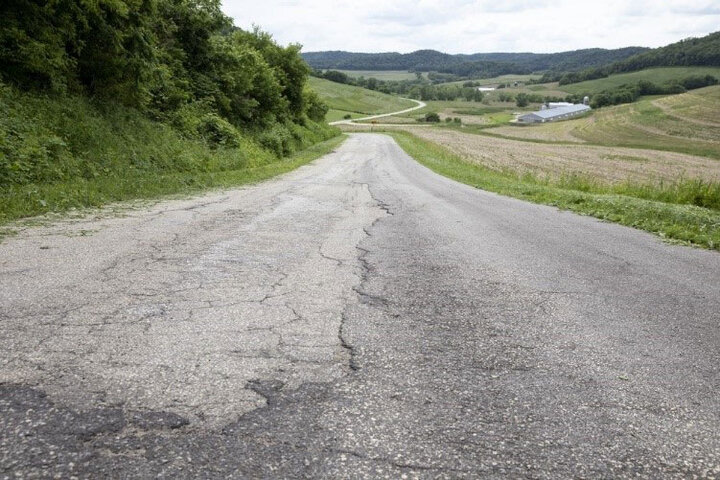The condition of nearby roads and bridges are critical to any a livestock operation. Problems accessing animal facilities can lead to difficulties feeding animals, maintaining their housing or environmental controls, or moving them from one site to another. Most production workers will also require reliable access roads to reach the facility. Poor weather, such as heavy rain or snow, often makes many rural roads impassable so it is essential that facility operators know which roads are best maintained, especially during the winter months. In some cases, a production site may find it valuable to invest in its own snow removal equipment and operators.
Bridges are also an important consideration when choosing a site for a livestock facility. It is helpful to know what alternate routes are available to the site in the event of road or bridge maintenance but be sure bridges on any alternate routes are ready for the volume of traffic the livestock facility will require. The Center for Transportation Research and Education (CTRE) at Iowa State University, provides some general guidance for well-maintained bridges in its Local Roads Maintenance Workers’ Manual:
- The operating width is the same as when the bridge was constructed.
- Structural members, deck, railing and channel are free from damage and corrosion and are in the same alignment as when they were built.
- All traffic control devices are in place, well maintained, and visible.
- Approach paving provides smooth access to the bridge deck.

In addition to access roads and bridges internal farm roads are typically maintained by operation owners. A Gravel Roads: Construction and Maintenance Guide is provided by the U.S. Department of Transportation providing general guidance for maintenance, drainage, surface gravel characteristics, and dust control on farm roads. Feed trucks, gas deliveries for animal calefaction, animal transport trucks, and worker automobiles are common vehicles transiting on farm roads and bridges. Before starting an operation, a producer must evaluate the existing roads to ensure they have the capacity to support all the traffic that will be generated.
For more information on transportation needs check out these road related resources:
- County maps for determining roads and other public infrastructure in the area.
- Plow tracker map for analyzing the condition of main roads after winter storms.
- Statutes and regulations of county roads Maintenance in Nebraska.